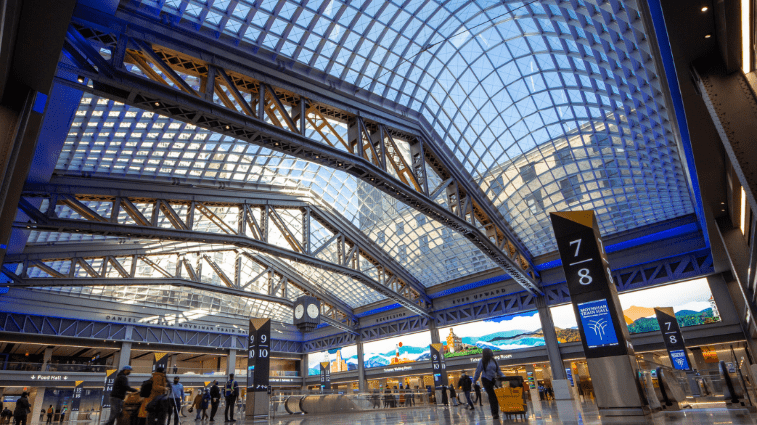
Wheels in Motion: 3 Post-COVID Design Trends From the Penn Station and Port Authority Plans
Earlier in 2021, two of New York City’s major transportation hubs, Penn Station and Port Authority Bus Terminal, released plans to the public for a major overhaul of the current infrastructure.
Both buildings, now over 50 years old, have long been in need of updates. While plans for the new Penn Station and Port Authority have been in the works for a few years, and will take many more to actually be completed, it’s inevitable that the plans would be influenced by COVID-19, particularly with community comments being encouraged. Plus, in many cases the pandemic has only accelerated trends that were already in the works.
If successful, the new Port Authority and Penn Station could set a standard going forward. Here are a few trends we see in the current plans that may be a sign of things to come.
Open Space
With social distancing now practically ingrained into the fabric of society and concerns over preventing future pandemics, it is notable that both plans feature increased open space.
The recently-opened Moynihan Trail Hall is a good indicator of where the rest of Penn Station might be headed, with its high ceilings and lack of obstructive columns. In addition, this has already been a trend across a number of industries, particularly airports such as New York’s LaGuardia Airport, whose newest terminal is 50% larger than the one it’s replaced.
Part of this comes out of pre-COVID concerns of overcrowding, as the number of commuters flowing through each hub in 2019 far exceeded the number it was designed to handle. Port Authority in particular was built for smaller buses, making it difficult for longer buses to operate and impossible for double-decker buses.
While it is hard to tell at this time whether those pre-2020 crowds will ever return to either terminal, more open space in New York architecture can benefit in a number of other ways, including helping to stem future outbreaks and making it easier for people to navigate in the event of an emergency.
Natural Light
Both plans also feature an increase of natural light, in stark contrast to their current enclosed, electrically-lighted spaces. For Penn Station, this would be achieved through an atrium or skylight, and for Port Authority through a glass curtain wall.
Natural light has become a priority in a number of modern projects, as it has been found to not only reduce utility costs (increasingly important in an energy-efficient New York), but to enhance the feel of a space in a way electric lighting has not yet been able to replicate.
After a year stuck inside when “outdoors” became associated with “safety,” commuters likely crave natural light more than ever before, which would be wise to incorporate into future designs.
Community Space
The pandemic created an increased demand for parks and public spaces in New York City, to help people connect with nature without traveling far away.
As part of the development around Port Authority, the current plans set aside approximately 3 ½ acres between 9th and 10th Avenue as a future public green, at the community’s request. This seems to reflect trends across other recent developments on including outdoor space, from creating terraces to opening up rooftops. Indeed, current legislation supports the creation of green roofs where possible.
In addition, the plans for Penn Station include the possibility of turning part of 33rd Street into a tree-lined pedestrian walkway leading to the station entrance, making for a more pleasant commute. So, a trend towards increasing community space and green space within New York City seems all the more likely.
While the current plans to fix Penn Station and Port Authority Bus Terminal may change or even cease to exist, the plans released to the public can still tell us a lot about the future of New York City in terms of architectural trends.
For help planning your next project, please feel free to reach out to Outsource Consultants is here to help.
Resources








